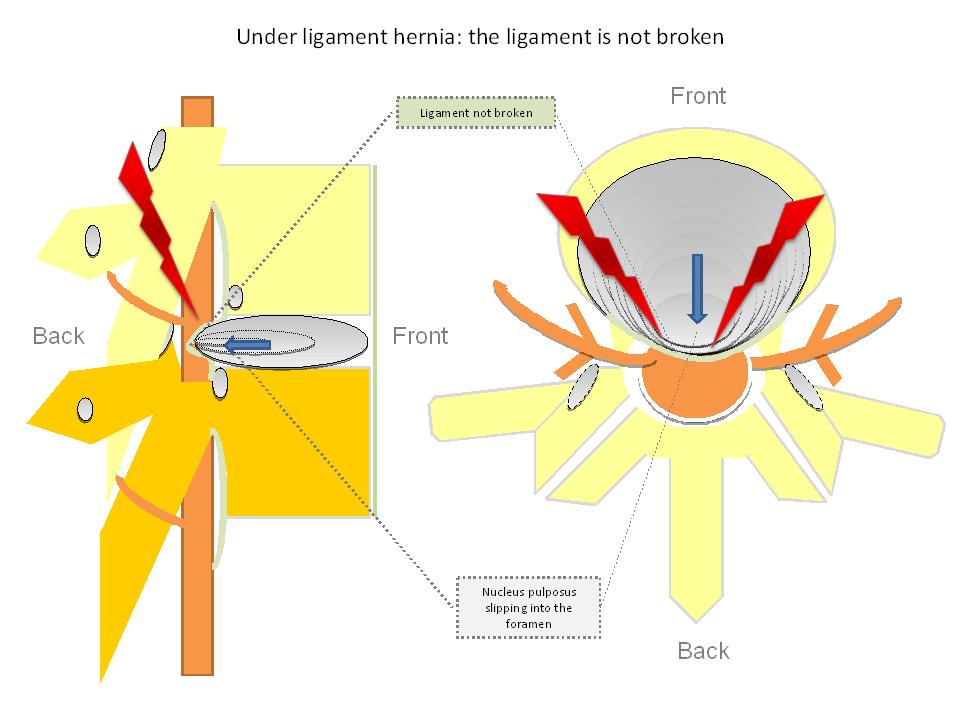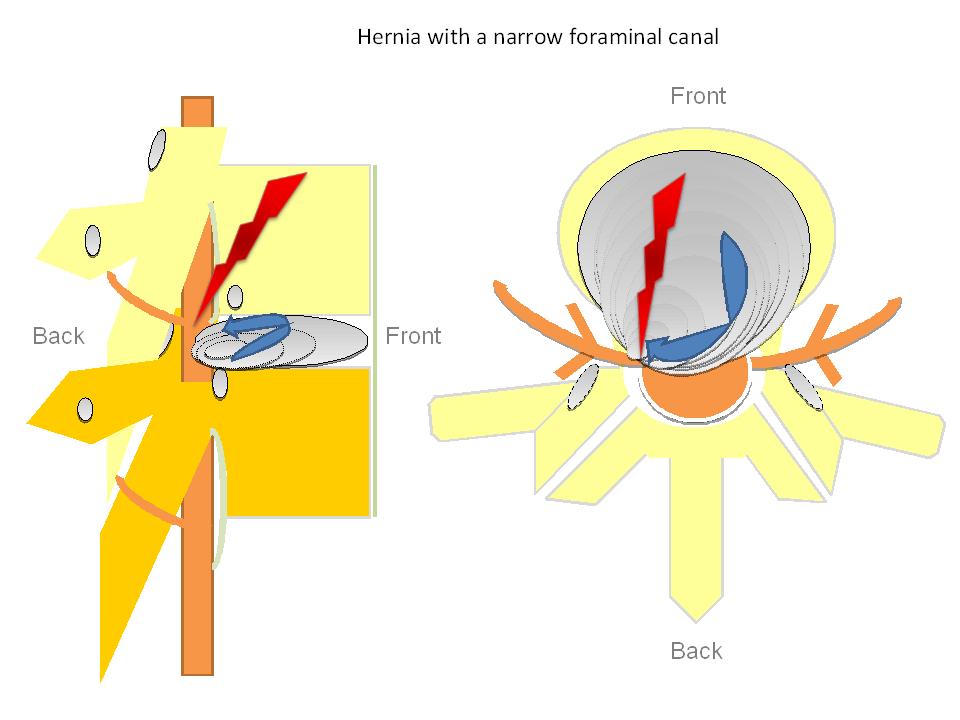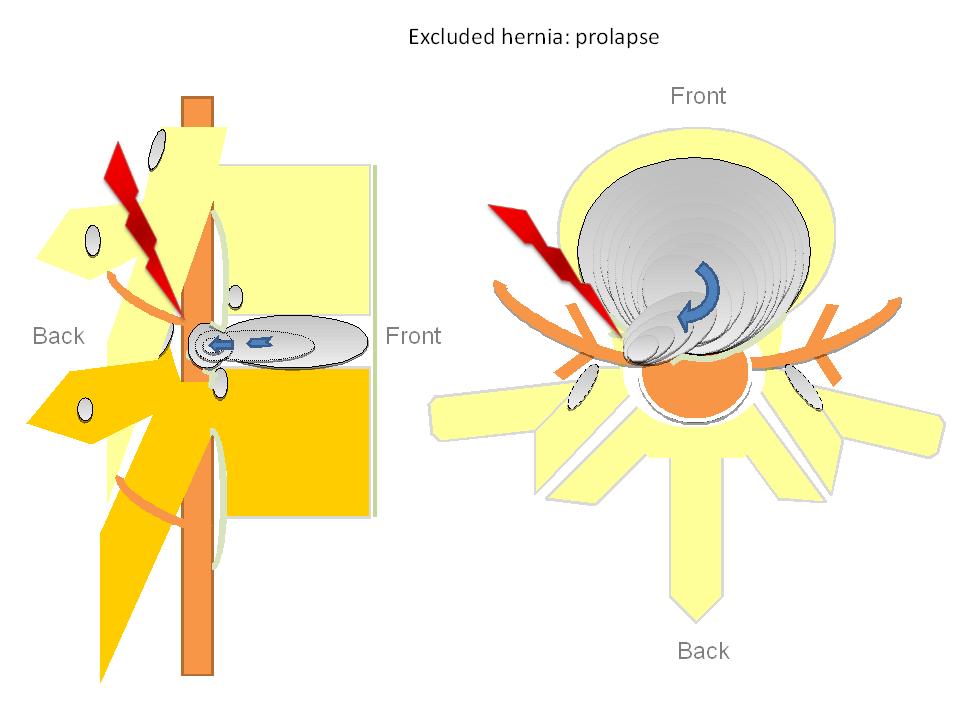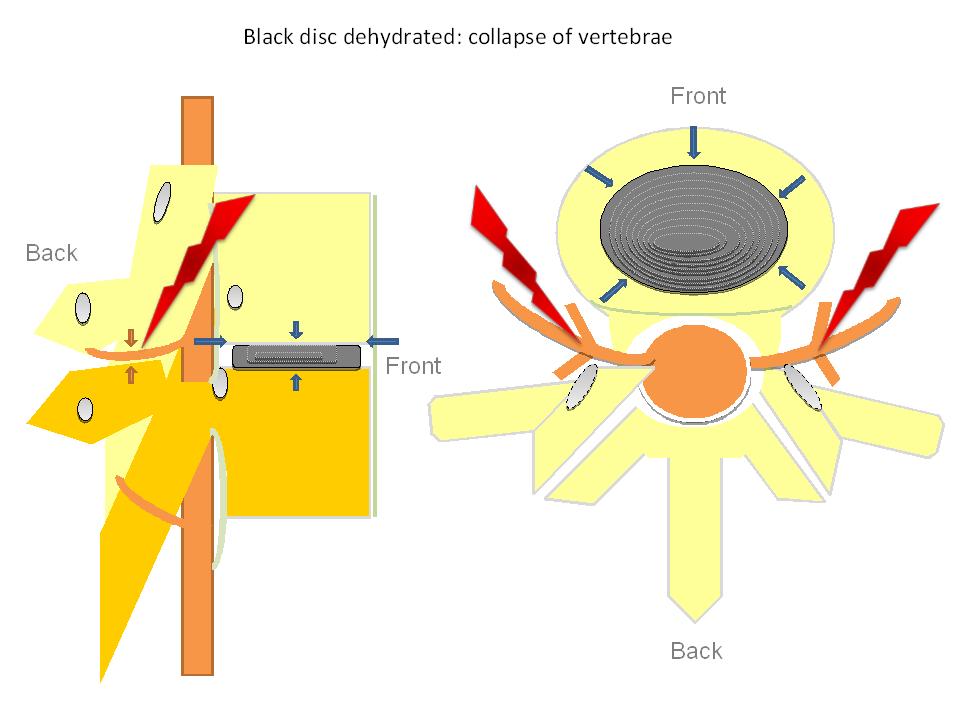What a herniated (or slipped) disc?
Définition of hernia
A herniated (or slipped) disc is expulsion in the spinal channel of a part of the intervertebral disc. This one being normally located in the space between two vertebras, which he separates.
A hernia occurs in 87 % cases at the level of the last lumbar vertebras: most often between vertebras L4 and L5 (4th and the 5th lumbar vertebra) as a consequence of a wrong movement or of a traumatism. This hernia can draw away a compression of roots at this level: bed of sciatic nerves.
Pain felt by the patient cannot however explain only by a mechanical phenomenon.
Other notably chemical phenomena can intervene and there are many hernias of significant volume which are asymptomatic.
These hernias as a protrusion, can lead to a compression of the nervous roots located in regard to the disc.
According to the level of the herniated disc, clinical expression can be a lumbar pain and/or a radicular pain (cruralgia, sciatic nerve).
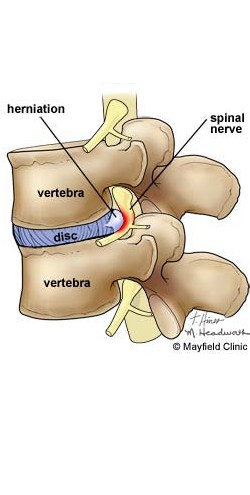
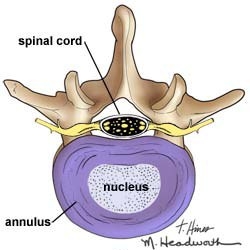
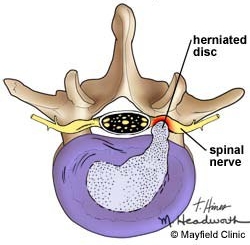
Normal intervertebral disc
It is necessary to know that the spinal cord ends at the level of back vertebra D12. And that at lumbar level this one persists by nervous roots which when they are irritated (by pinch) are the bed of pain.
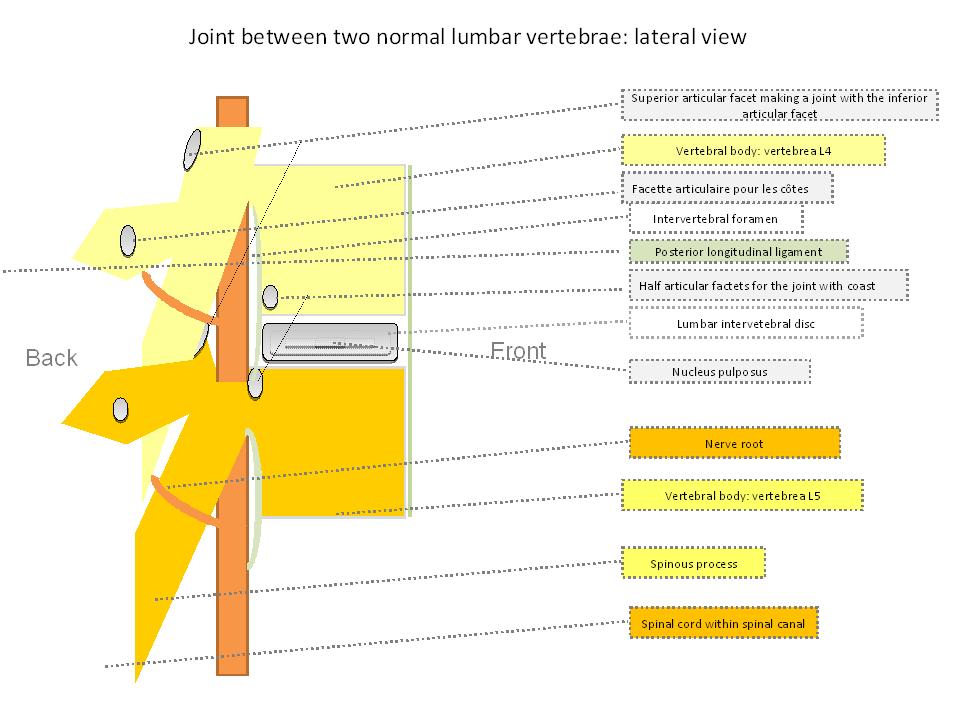
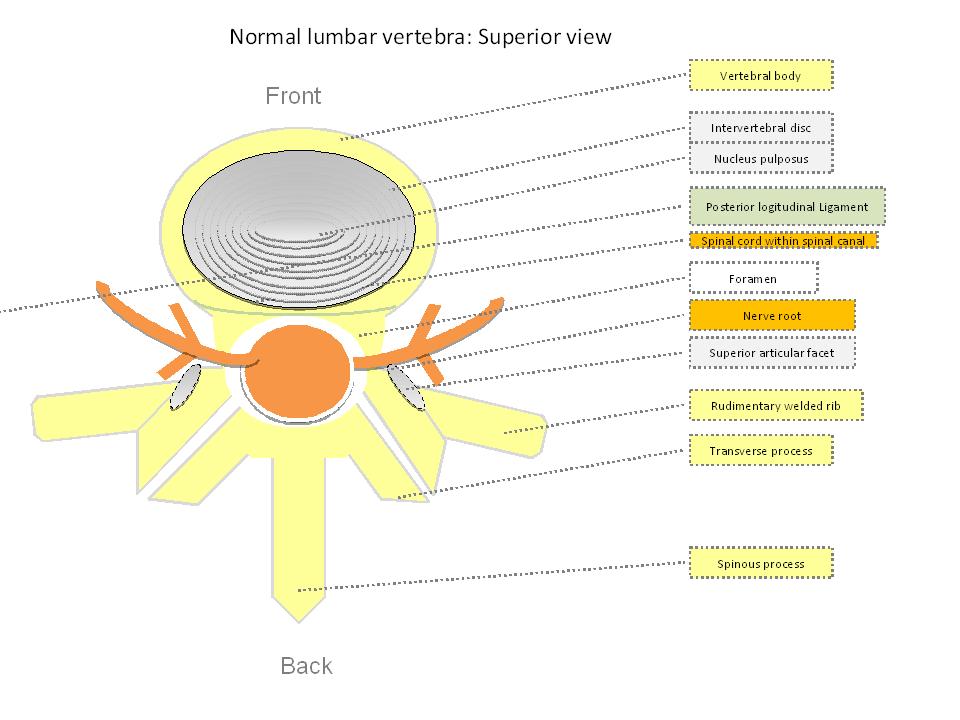
Common intervetebral disc hernia
To make easier the understanding of the simplified diagrammes describe main types of hernias met according to the anatomic plan in which they are situated:
- In an axial plan:
- Median
- lateral Posterior or Para median
- Foraminal
- Extra foraminal
- In sagittal plan hernias are described:
- Ascending
- Descending
- Hernia can be:
- Excluded (in relation to the posterior longitudinal ligament)
- Extruded (by definition)
- Protrude (incomplete form of herniated disc)
- It is possible that a damaged disc is dehydrated. It appears black to imagery.
This dehydration of the disc produces an intervertebral packing which can be painful, by crushing of nerves passing between two vertebras
